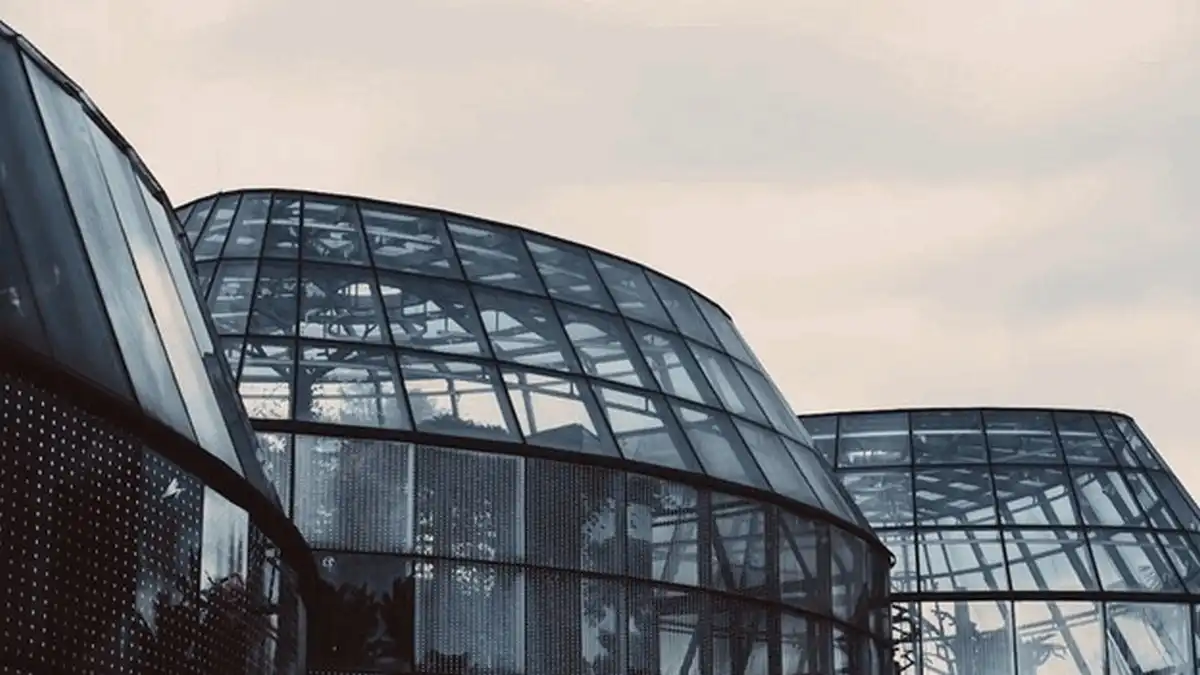Where architecture and AI meet in 2024, Building office design, Artificial intelligence architects advice
Where Architecture and AI Meet in 2024
post updated 7 May 2025
It was only a matter of time before architecture and artificial intelligence joined forces, and the time is now.
Welcome to the innovative era where construction and design are being reshaped like never before.
The combination of AI and architecture isn’t just the latest trend —it’s a massive transformational leap. Plus, the market for AI assistance is expected to reach $407 billion by 2027.
Come along and see how the awe-inspiring advances in AI will revolutionize the architectural world forever.
21 Nov 2023
1. AI in Architectural Evolution
Artificial intelligence was once a distant concept. Storylines everywhere attempting to captivate audiences into a futuristic world. Those thoughts aren’t so far-fetched anymore! In fact, by 2025, as many as 97 million people are predicted to work in the field of AI.
It is now common for AI algorithms to power design software, revolutionizing the way architects develop, express, and execute their creative visions. For detailed insights and statistics on AI’s growth and impact, check out 2024 AI Statistics.
Some key perks of architectural AI advances include:
- Streamline Design: AI can analyze vast datasets and user preferences to make the design aspect much more efficient.
- Sustainability Enhancement: AI will recommend eco-friendly materials and designs when possible, fostering sustainable architecture.
- Predictive Structural Analysis: AI predicts and evaluates structural integrity, minimizing risks during construction phases.
2. Enhance Design and Efficiency
The human mind can only process so much information at once. Meanwhile, AI is capable of processing unlimited amounts of data. AI algorithms, for instance, can:
- Analyze vast amounts of data in a short amount of time.
- Aid in comprehending user behavior.
- Consider environmental impacts.
- Compare historical trends.
One of the most impactful advances for architects is to rapidly generate design alternatives. AI makes it easier than ever to tailor designs to specific needs while also optimizing efficiency. This blend of functionality and creativity opens doors we never even realized were there.
The possibilities are endless!
3. Turning Vision to Reality
Virtual reality simulations are taking over the visualization process, and 91% of leading organizations are currently investing in these AI-driven activities.
Architects and clients can now immerse themselves in the world of virtual walkthroughs. Allowing even deeper communication and understanding, resulting in total confidence before a single brick is ever laid.
While this feature speaks for itself, some other benefits include:
- Increased client satisfaction.
- Minimization of modifications.
- Real-time adjustments.
- Speedy refinement of project details.
4. Increased Sustainability
We cannot fail to mention one of the most significant impacts of AI in architecture – enhanced sustainability. Algorithms developed through artificial intelligence can now analyze environmental factors, such as:
- Optimized Material Selection: Eco-friendly materials designed to reduce the environmental footprint.
- Energy Efficiency Enhancement: Systems developed specifically to reduce energy usage.
- Biophilic Design Integration: Blueprints strategically curated to connect nature with building design.
5. Secret Ingredient: Human Touch
I know we’ve been boasting about all the ways AI is revolutionizing the architectural realm, but the truth is this: the human touch will always remain irreplaceable.
There’s no denying the efficiency and precision technology brings to the table. Pair that with the human mind, and you’ve got a recipe for extreme success.
Architects who harness AI as a tool to enhance their capabilities will drastically push the envelope of innovation. After all, the vastness of human imagination will never be replicated by technology.
Pairing the human mind with AI allows architects to:
- Explore novel ideas inspired by AI insights.
- Infuse projects with both technical and human-centric design philosophies.
- Multiply the number of construction ideas by the thousands.
It’s also worth noting that since we are human, after all, we must protect ourselves while utilizing these online resources, as well.
Secure your architecture projects, along with your clients’ private information. Take advantage of tools like Surfshark VPN to encrypt your online activities and protect your sensitive data from cybercriminals.
Where architecture and AI meet in 2024 Conclusion
Embrace the Future
As we step into 2024, we must start to embrace these futuristic changes, allowing them to enhance our current abilities.
AI is propelling us closer to groundbreaking designs, sustainable structures, and enhanced efficiency. Stop rejecting these advancements and start using them to your advantage!
Step into this new chapter of evolution with confidence. Use these tools to create something new and unique for you and your clients.
Somewhere between the mix of human ingenuity and technological advancement is a beautifully crafted harmony.
Comments on this Where Architecture and AI Meet in 2024 article are welcome.
Building Articles
Residential Architecture
Tianshan Gate of the World Shijiazhuang Skyscraper
Building Technology
Home Technology Posts
Will Artificial Intelligence Replace Architects
How technology can help you design perfect home
5 Ways Technological Innovations Have Impacted Real Estate
Comments / photos for the Where Architecture and AI Meet in 2024 – artificial intelligence building design page welcome






